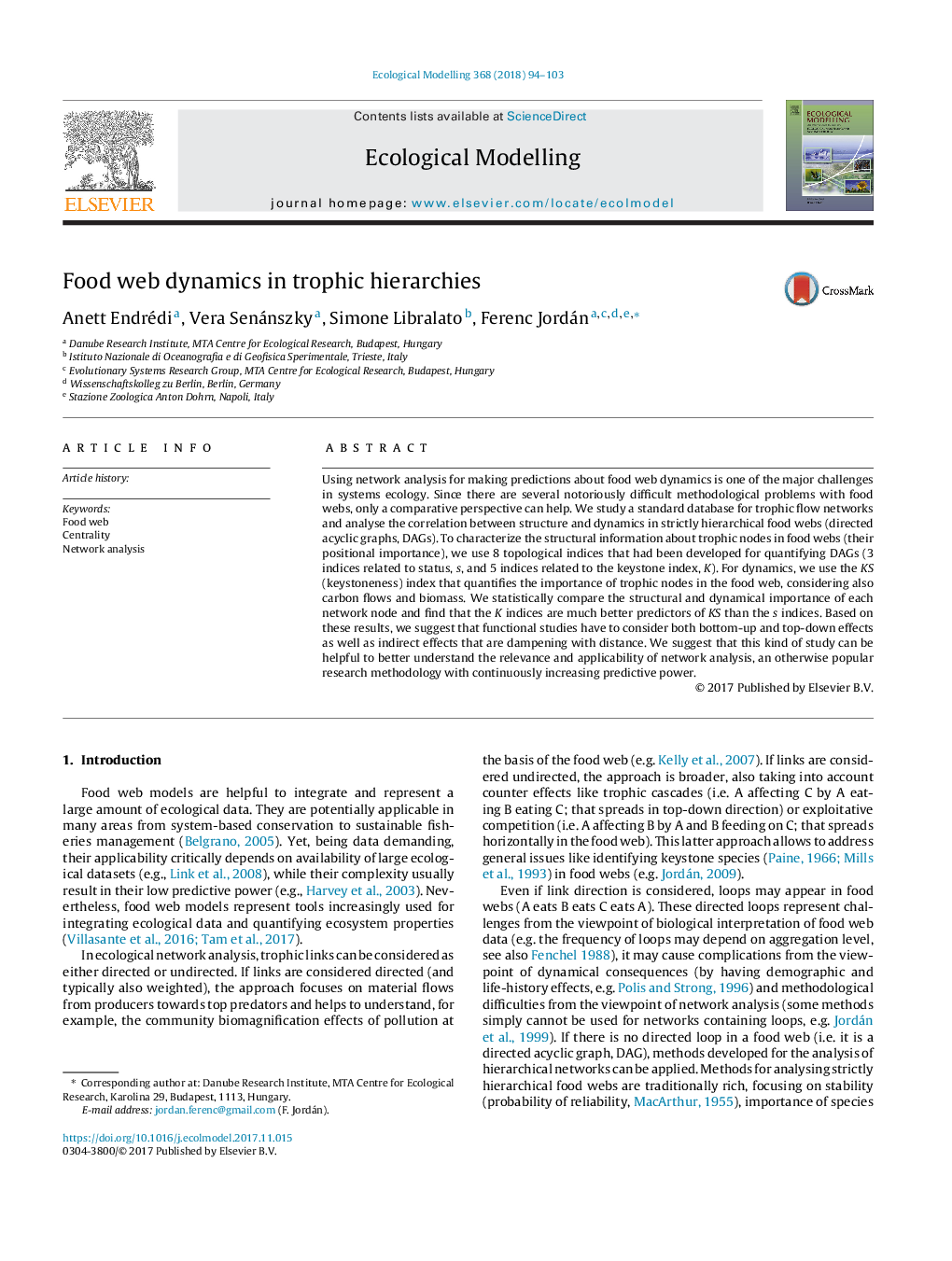| Article ID | Journal | Published Year | Pages | File Type |
|---|---|---|---|---|
| 8846133 | Ecological Modelling | 2018 | 10 Pages |
Abstract
Using network analysis for making predictions about food web dynamics is one of the major challenges in systems ecology. Since there are several notoriously difficult methodological problems with food webs, only a comparative perspective can help. We study a standard database for trophic flow networks and analyse the correlation between structure and dynamics in strictly hierarchical food webs (directed acyclic graphs, DAGs). To characterize the structural information about trophic nodes in food webs (their positional importance), we use 8 topological indices that had been developed for quantifying DAGs (3 indices related to status, s, and 5 indices related to the keystone index, K). For dynamics, we use the KS (keystoneness) index that quantifies the importance of trophic nodes in the food web, considering also carbon flows and biomass. We statistically compare the structural and dynamical importance of each network node and find that the K indices are much better predictors of KS than the s indices. Based on these results, we suggest that functional studies have to consider both bottom-up and top-down effects as well as indirect effects that are dampening with distance. We suggest that this kind of study can be helpful to better understand the relevance and applicability of network analysis, an otherwise popular research methodology with continuously increasing predictive power.
Keywords
Related Topics
Life Sciences
Agricultural and Biological Sciences
Ecology, Evolution, Behavior and Systematics
Authors
Anett Endrédi, Vera Senánszky, Simone Libralato, Ferenc Jordán,
